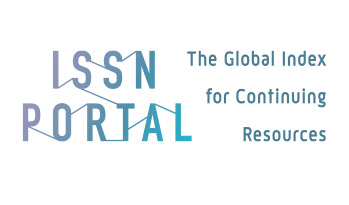PROFIL EPITHELIAL OVARIAN CARCINOMA (EOC) DI DR. RUMAH SAKIT UMUM KARIADI SEMARANG
DOI:
https://doi.org/10.37776/zkeb.v11i3.800Keywords:
Ovarian cancer, age, histology type, mucinous carcinomaAbstract
Ovarian cancer is the 7th leading cancer in incidence (3,4%) after breast, colorectal, lung, cervix uteri, thyroid, corpus uteri and stomach cancer among women worldwide according to Globocan, 2018. Ovarian cancer in Indonesia is the 3rdmost leading cause of cancer death, after cervix and breast cancer. The most common type of ovarian cancer is epithelial ovarian carcinoma (EOC), which most prevalent in older women. This study was aimed to describe clinicopathological profile of EOC in kariadi general hospital semarang from January 2016 to December 2018. This is the observational analytical studyusing data of ovarian cancer patient medical records at the laboratory of pathological anatomy in kariadi general hospital semarang. Data collection include : age of diagnosis, location, size tumor and histological subtype. 330 EOC patient were included in this study. Most of EOC patient (52%) were diagnosed more than 40 years old. 81% of EOC patient had unilateral location. 60% of patient had size tumor more than 14 cm in diameter. Histological subtype of patient was mostly mucinous carcinoma (40%). EOC patient in kariadi general hospital semarang was mostly diagnosed at more than 40 y.o, had unilateral location and had mucinous carcinoma subtype.Downloads
References
American Cancer Society |AICR (2019) ‘Facts & Figures 2019’, American Cancer Society, pp. 1–76. Available at: https://www.cancer.org/content/dam/cancer-org/research/cancer-facts-and-statistics/annual-cancer-facts-and-figures/2019/cancer-facts-and-figures-2019.pdf.
Aziz, M. F. (2009) ‘Gynecological cancer in Indonesia’, Journal of Gynecologic Oncology, 20(1), pp. 8–10. doi: 10.3802/jgo.2009.20.1.8.
Damayanti, I. N., Yulianti, I. and Kusumastuti, E. H. (2018) ‘Three years survival rate of epithelial ovarian cancer patients in Dr. Kariadi Hospital, Semarang, Central Java’, Majalah Obstetri & Ginekologi, 24(3), p. 100. doi: 10.20473/mog.v24i32016.100-104.
Fransisca Noela, K. H. N. (2016) ‘Epidemiology Data of Ovarian Cancer in Dr. Cipto Mangunkusumo Hospital, Jakarta’, Indonesian Journal of Obstetrics and Gynecology, 4(2).
Ginsburg, O. et al. (2017) ‘The global burden of women’s cancers: an unmet grand challenge in global health Europe PMC Funders Group’, Lancet, 389(10071), pp. 847–860. doi: 10.1016/S0140-6736(16)31392-7.
Guillermo Tortolero-Luna MD, PhD, Michele Follen Mitchell MD, M. (1995) ‘The epidemiology of ovarian cancer’, Journal of cellular biochemistry, pp. 200–207.
Micci, F. et al. (2010) ‘Genomic aberrations in borderline ovarian tumors’, Journal of Translational Medicine, 8, pp. 1–9. doi: 10.1186/1479-5876-8-21.
Momenimovahed, Z. et al. (2019) ‘Ovarian cancer in the world: Epidemiology and risk factors’, International Journal of Women’s Health, 11, pp. 287–299. doi: 10.2147/IJWH.S197604.
Mukuda, N. et al. (2018) ‘Bilateral ovarian tumors on MRI: How should we differentiate the lesions?’, Yonago Acta Medica, 61(2), pp. 110–116. doi: 10.33160/yam.2018.06.003.
Pejovic, T. et al. (2020) ‘Association between vitamin D and ovarian cancer development in BRCA1 mutation carriers’, Oncotarget, 11(45), pp. 4104–4114. doi: 10.18632/oncotarget.27803.
Petrucelli, N., Daly, M. B. and Pal, T. (1998) ‘BRCA1- and BRCA2 -Associated Hereditary Breast and Ovarian Cancer Summary Genetic counseling Suggestive Findings’, GeneReviews, University of Washington, Seattle, pp. 1–37.
Pusat Data dan Informasi Kementerian (2015) ‘Situasi Penyakit Kanker’, Journal of Chemical Information and Modeling, 53(9), pp. 1689–1699.
Reid, B. M., Permuth, J. B. and Sellers, T. A. (2017) ‘Epidemiology of ovarian cancer: a review’, Cancer Biology and Medicine, 14(1), pp. 9–32. doi: 10.20892/j.issn.2095-3941.2016.0084.
Society, A. C. (2014) ‘What is ovarian cancer?’, pp. 1–14.
Society, A. C. (2018) ‘Special Section : Ovarian Cancer’, Cancers facts and figures, 45(2), pp. 28–43.
The World Ovarian Cancer Coalition (2018) ‘The World Ovarian Cancer Coalition Atlas: Global Trends in Incidence, Mortality and Survival’, The every woman study, (April), pp. 1–39.
Vaidya, S et al. (2014) ‘Spectrum of ovarian tumors in a referral hospital in Nepal’, Journal of Pathology of Nepal, 4(7), pp. 539–543. doi: 10.3126/jpn.v4i7.10295.
















